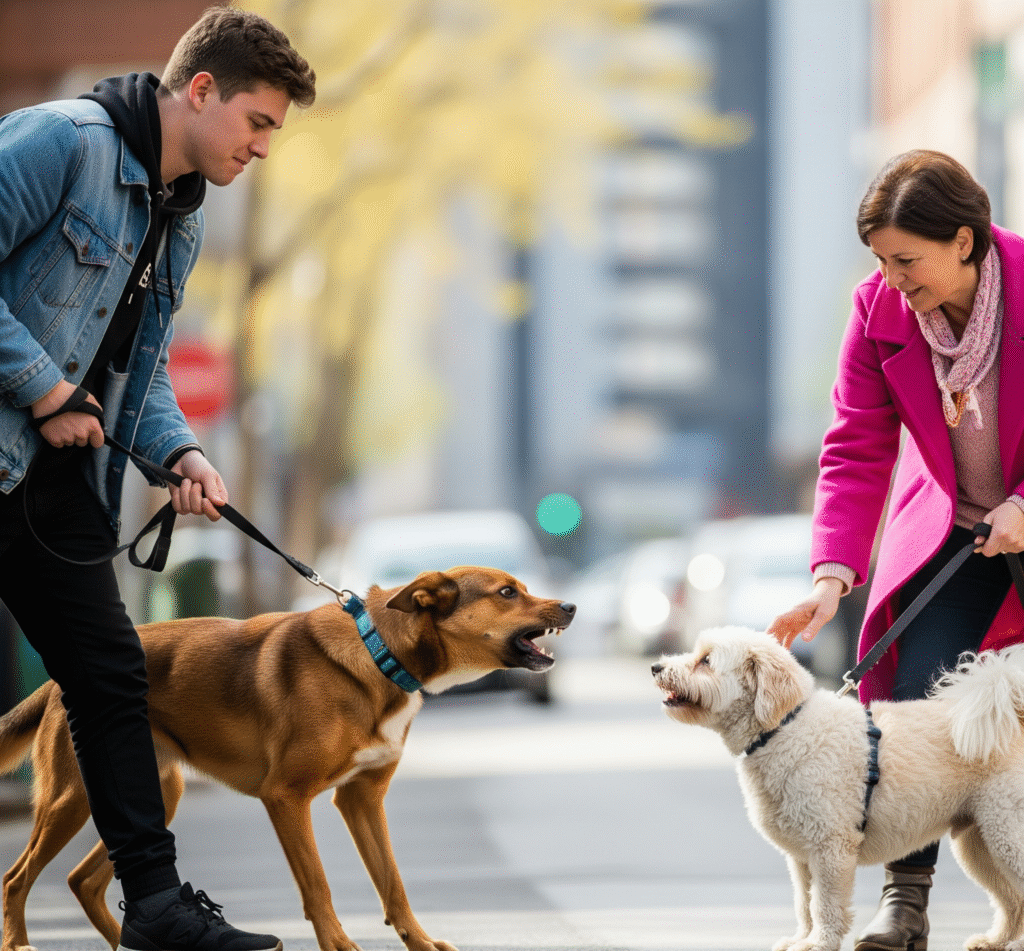Having a reactive dog can feel isolating and frustrating at times—but you’re not alone, and your pup is not a lost cause. Socializing a reactive dog is possible with the right combination of patience, consistency, and gentle training methods. Whether your dog reacts with barking, lunging, or freezing up, this guide will walk you through how to help them feel more secure and relaxed in social settings.
🐶 What Is a Reactive Dog?
A reactive dog is one that overreacts to specific triggers—like other dogs, people, bikes, or loud noises. Reactivity often stems from fear, anxiety, or lack of proper socialization during early development. It’s important to distinguish between aggression and reactivity—reactive dogs aren’t necessarily aggressive; they’re often overwhelmed.
🚶♀️ Step-by-Step: How to Socialize a Reactive Dog
1. Start with Controlled Distance
Begin training in a low-distraction environment where your dog feels safe. Gradually expose them to triggers from a distance. For example, let them observe another dog from across the street. If they stay calm, reward with a high-value treat.
Tip: Use a long lead and harness to maintain control without making your dog feel restrained.
2. Watch Their Body Language
Understanding your dog’s signals is key. Look for early signs of stress like:
- Whale eye (white showing around eyes)
- Yawning or lip licking
- Stiff body posture
- Tail tucked or raised
When you see these signs, redirect or increase the distance from the trigger.
3. Use Positive Reinforcement
Reward calm behavior consistently. When your dog looks at a trigger and doesn’t react, mark the behavior with a clicker or “yes!” and offer a treat.
Avoid punishment, as it can increase anxiety and worsen reactivity.
4. Practice the “Look at That” Game
This desensitization game teaches your dog to calmly look at a trigger without reacting.
- Step 1: Say “Look!” when the trigger appears.
- Step 2: When your dog looks at it, reward immediately.
- Step 3: Over time, they’ll start to associate the trigger with good things (like treats).
5. Gradually Increase Exposure
Once your dog can stay calm at a distance, slowly close the gap over time. Always go at your dog’s pace—this could take days, weeks, or even months depending on the individual dog.
6. Consider a Professional Trainer
For moderate to severe reactivity, a certified positive reinforcement trainer or veterinary behaviorist can be invaluable. Look for someone with experience in reactive or fear-based behavior modification.
🧘 Calming Aids That May Help
If your dog is overly anxious during socialization attempts, these tools might help:
- Thundershirts
- Adaptil calming collars
- Soothing dog music (yes, it works!)
- Supplements like L-theanine or CBD (check with your vet first)
🌼 Be Kind to Yourself and Your Dog
Socializing a reactive dog is not a race. It’s okay to take breaks, go back a step, or even work on other behaviors while you build trust. Remember: Every small win is a step forward.
Final Thoughts
With consistency, patience, and love, you can help your reactive dog become more confident and less fearful in the world around them. Whether you’re helping your pup make peace with the neighbor’s dog or simply trying to enjoy a calm walk at the park, know that progress is always possible.

